#knight templar
Text
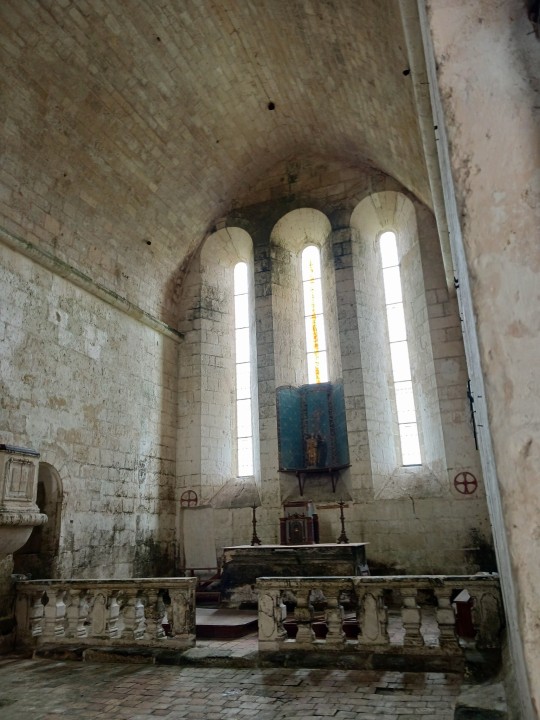


#personal#tradwife#traditional gender roles#traditional femininity#tradfem#traditional#modesty#catholic#chapel#knight templar#knights#catholicism#church#historic
170 notes
·
View notes
Photo

Knight Templar (2422).
The property of Mr. George Burton. By Royal Knight out of Silly 1st, by Wonderful Lad.
Sir Humphrey de Trafford, 1907, The Horses of the British Empire, Vol. 1.
#Yorkshire Coach Horse#extinct breed#harness horse#coach horse#stallion#Knight Templar#The Horses of the British Empire#1907
24 notes
·
View notes
Text




King Phillip!!!! STOP IT! PLEASE!! I know you’re hurting but you need to let love be love 😭😭😭
#tom cullen#ed stoppard#knightfall#knightfall s1 episode 10#knightfall s1#Landry#knight templar#why are kings the worst#season finale#battle scene#fight scene#period drama#this one is for the ed Stoppard lovers#Knightfall king philip#Knightfall landry
13 notes
·
View notes
Photo

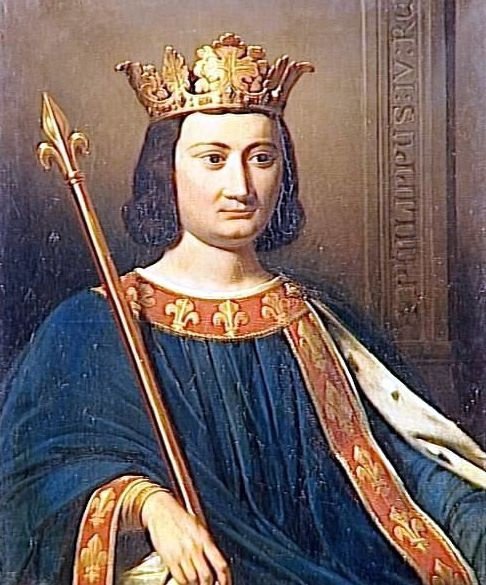
Why did the Templars just disappear in the early Middle Ages when they were so powerful?
They didn’t disappear. They were purged.
Most of them, anyway. Think Order 66 with swords.
But in order to understand why the Knights Templar were rounded up on Friday the 13th, 1307, you need to understand the context of the time in which it happened. Several factors contributed to the fall of the Templars, but the biggest one was this guy:

This is Philip IV, King of France, who ruled from 1285 until his death in 1314. He was the main architect in the fall of the Templars—but I’m getting ahead of myself.
The fall of the Knights Templar was set in motion when the Siege of Acre ended in 1291. When it fell to the Mamluk forces, it marked the loss of the entire Holy Land for Christendom. Acre had been the last piece of territory in the Holy Land held by Christians, so its fall was a grievous blow to Europe. It was an unmitigated disaster.
That’s where the Templars come in.
The Poor Fellow-Soldiers of Christ and the Temple of Solomon, or Templars for short, were originally established after the Crusaders captured Jerusalem at the end of the First Crusade. Their mission was to guide and protect pilgrims on the road to the holy city, as traveling in those days was fraught with peril. Those who joined the order in those early days took vows of poverty, chastity, piety and obedience, and their sigil even showed two men riding on the same horse to emphasize the Templars’ rejection of worldly goods.
Their self-imposed poverty didn’t last long, however. The Templars soon found a powerful advocate in a priest named Bernard of Clairvaux, who wielded a great of amount of influence in the Catholic Church. Clairvaux was so psyched about the Templars that he wrote books talking about how awesome they were, and this got everybody so pumped that in 1189 Pope Innocent II issued a papal bull saying that the Templars were exempted from paying taxes to anyone and didn’t have to obey local laws or customs. Instead, the Templars would answer only to the Pope himself. With this kind of public prestige, the Knights Templar soon became a popular charity: powerful lords and peasants alike donated their money, businesses, and even vast tracts of land to their cause, and sons from noble families from across Europe clamored to join them.
The Order quickly grew to be one of the most powerful military and financial institutions in Europe. They achieved famous victories such as the Battle of Montgisard in 1177, when some 500 Templar knights, backed up by a force of only several thousand foot soldiers, took on more than 26,000 enemy soldiers and absolutely crushed them. At the height of their power, the Templars were so rich and so powerful that even the crowned heads of Europe didn’t want to cross them. They controlled vast tracts of land throughout Europe and the Middle East, built massive cathedrals and castles, and were heavily involved in manufacturing as well as imports and exports, which is why they controlled a large fleet of trading ships and an even larger navy. They even set up an early kind of banking system and bought the whole freaking island of Cyprus.
A century after their founding, the Templars had become an independent state in all but name. Some historians have even called them the first true multinational corporation.
But when Acre fell and the Christians lost their grip on the Holy Land, the Templars lost their reason for being. Even as they grew in power they never neglected their original purpose of protecting pilgrims on the road to Jerusalem. But now that the Holy Land was lost, there weren’t any pilgrims to protect. The loss of the Holy Land also did a lot to diminish their reputation in the eyes of peasants and nobles alike, some of whom even blamed them for the catastrophe that Christendom had suffered. Public support for the order began to wane.
I mean, imagine that you’re a European king or feudal lord for a just second. The Templars have returned to Europe in the aftermath of the Third Crusade. Maybe they’re even travelling through your land. They’ve got a massive army, a massive navy, they don’t pay taxes, they’re richer than sin, and they can do pretty much whatever the hell they want because the laws literally don’t apply to them. The only person with the authority to command the Templars to do anything is the Pope, and Rome’s a long way away. If they decide to camp outside your castle and eat your food and drink your wine for three weeks as your “guests,” there’s nothing you can do about it. The idea of such a powerful force with so little accountability would have made you pretty uneasy. And the Templars themselves did little to relieve that anxiety. Many of them could, and did, take full advantage of their immunity to local laws and customs. The phrase “drunk as a Templar” became popular for a reason. To be sure, all this might have been more easily borne before the tide of the Crusades turned against the Crusaders, but now these jokers are walking around all lordly-wise and they’re not even winning anymore. All of this made a lot of very powerful people very nervous and increasingly disgruntled.
The point I’m trying to get at here is that the Templars were already having some serious PR issues even before Philip IV of France came along. Speaking of which…
See, Philip IV came to the French throne in 1285, and by 1303 he found himself and his kingdom deeply in debt after several failed—and very expensive—military campaigns. King Phil couldn’t afford to pay for all that on his own, so he went to the only people in Europe who could loan him the cash he needed. Those people—you guessed it—were the Templars, and he opened a huge tab with them that only got larger with time. And since King Philip seems to have had the financial acumen of a freaking goldfish, it didn’t take long for him to bring his kingdom into dire straits.
Now, Philip shared many of the same concerns about the Templars as his contemporaries, but he was probably much more worried about how much money he owed them. He may have even feared that the Knights would try to overthrow him if he wasn’t able to pay them back—and he damn sure wasn’t able to pay them back, not after borrowing such enormous sums.
In short, all of his biggest headaches seemed to trace back to the Templars. So what did he decide to do?
Get rid of the Templars, of course. By destroying them, he could eliminate a potential threat to his authority, wipe out his debt, and replenish his kingdom’s coffers all in one fell swoop.
But the Templars were traditionally protected by the Pope, so Philip IV’s first task was to remove their shield of papal authority. He did this by committing an act almost as audacious as his persecution of the Templars: stacking the papacy. Here is when we first see his Machiavellian brilliance on full display, for it was through this web of machinations—which included bribery, intimidation, and even violence—that he was able to get a puppet Pope, Clement V, installed in the Vatican. Clement issued the edicts, but it was Philip who pulled his strings. The King of France now had de facto control over the Catholic Church, and he used that control to have Pope Clement draw up a long list of charges against the Templars. These included blasphemy, heresy, sodomy, idol-worship and even witchcraft. He also accused the Templars of performing obscene rites in their initiation ceremonies, which was a clever charge to make because the Templars kept the details of those ceremonies a closely-guarded secret. No one knew what those ceremonies entailed, and the Templars were forbidden by oath from discussing them with outsiders, so they couldn’t really refute the charges against them.
Needless to say, few historians take these any of these accusations seriously. They were almost certainly fabrications concocted by the king himself.
Next, Philip lured all the Templar leaders to France on a pretext. He claimed that he wanted to discuss merging them with another knightly order, the Knights Hospitaller. All the most powerful Templars heeded his call and came to France. Many were accompanied by lavish baggage trains, which Philip was no doubt counting on. He then issued secret instructions to all his officials in every city and town where the Templars were staying. So did Pope Clement, at Philip’s behest.
In other words, these orders were sent out not just across France but across Europe, to every village, city, castle and keep with a Templar presence. It was received by princes, judges and civil officials in Spain, England, Germany and Cyprus. But no matter who they were sent to, the orders were the same:
At daybreak on Friday the 13th of October, 1307, every Templar in sight was to be arrested. Nothing was to be said to anyone about the raid before it happened, on pain of death if the plot was given away.
The plan went off like clockwork. It took the Templars completely by surprise. At dawn on the appointed day, they suddenly found themselves under attack all over the Continent. Some managed to escape, but many of them were rounded up and imprisoned or killed. Those unlucky enough to be captured, including their Grand Master Jacques du Molay, were tortured until they confessed to the trumped-up charges that had been leveled against them. Many of them died from this terrible treatment or were burned at the stake, and Pope Clement officially dissolved the Knights Templar several years later. Du Molay himself was eventually burned at the stake along with many of his comrades.
But the immense wealth that Philip had planned on seizing never materialized. The vast treasure the Templars brought with them to France was never recovered, and no one knows what happened to it. We do know that a Templar fleet of more than twenty vessels was anchored in the French city of La Rochelle before the purge and vanished overnight shortly after it began, but no one knows where it went. Some believe that the Templars used those ships smuggle their treasure out of France just in the nick of time, but there’s no way to know for certain. And even if they did, the treasure is just as lost to us today as it would have been had it stayed in France.
Nor does anyone know for certain what happened to the Templars who were lucky enough to survive the purge. Some of them no doubt faded into the background or lived the rest of their lives in hiding. Others may have vanished into the ranks of the Knights Hospitaller. A lucky few might have been able to bribe or plead enough for clemency if they were caught.
There are stories, though. One of the most persistent legends says that some of the remaining Templars managed to make it to Scotland, where they later fought for Robert the Bruce at the Battle of Bannockburn in 1314. The Templars had strong connections with Scotland that dated back for more than a century, and Robert had little reason to honor the papal decree to purge the Templars. The pope had excommunicated him and his entire country after he murdered one of his rivals, John Comyn, inside a church on February 10, 1306, and now the King of Scots was fighting a brutal war against the English. If the Templars did indeed show up on his doorstep, he would have been happy to have such experienced and fearsome warriors on his side. But to date, no solid evidence has been found to give this theory credence.
Another legend—and my personal favorite—claims that some of the Templars fled to the Swiss Alps. In fact, there are stories in Switzerland even today of “armed white knights” who helped the Swiss crush an invasion by Duke Leopold of Hapsburg in 1315, just a few years after the purge. Could these “white knights” have been Templars? If they were, they picked a perfect spot. The Swiss Alps are formidable even with today’s technology, so they would have been an ideal location to hide in. They would also have been a great place for the Templars to put their expertise to good use. In fact, some claim that these fugitive Templars trained the very first Swiss pikemen, who went on to win renown as the most fearsome fighters in Europe. It is, after all, fairly remarkable how quickly the Swiss, who had been simple subsistence farmers for centuries before Duke Leopold’s invasion, became some of the finest warriors of their day. The story even goes so far as to claim that the Templars also taught the Swiss their secrets of banking and finance, and that those same secrets eventually evolved into the unique banking system still used in Switzerland today.
But by far the most fantastical—and least likely—story says that a group of Templars fled to North America, and that they used old maritime routes first pioneered by the Vikings centuries earlier to island-hop across the North Atlantic until they landed somewhere along the upper northeastern seaboard. Few historians take this assertion seriously, however, as there is almost no archaeological evidence to back it up.
Ultimately, as with the final destination of their fabled wealth, the true fate of the last Templars will likely never be known.

#philp iv#kemetic dreams#templars#knight templar#switzerland#north america#duke leopold#english#duke#john comyn#scotland#europeans#european history#philip iv
46 notes
·
View notes
Photo


Photos by Mónica Beltrandi, taken last weekend.
83 notes
·
View notes
Text

A Knight Templar stands on a Mediterranean shore, wearing the red cross on his cloak authorised by Pope Eugenius III in 1146. Date: 1309
#knight#knights templar#templars#art#history#knight templar#templar#mediterranean#middle ages#medieval#christian#christianity#crusades#pope eugenius iii#cross#crusader
56 notes
·
View notes
Text
#poll#fighting#puppy#strange brew#the void#batman#time bandits#knight templar#mcdonalds#enderman#the bourne identity#cookie run kingdom#adventure time
3 notes
·
View notes
Note
What are your favorite villain tropes/archetypes?
Okay... let me do this in order because I actually have 4.
Magnificent Bastard - This trope entirely relies on charisma, but I love it because any antagonist that falls into this category is also humanized without removing anything that makes them a total fiend. I also love how versatile this trope is, and appreciate the amount of effort it takes to write an antagonist like this right.
Knight Templar - A rare type of villain to see, but I love whenever a Knight Templar is in the spotlight. These guys are driven by something they think of as truly righteous, be it motivated by tragedy or delusions. No matter the reason, these gentlemen are the definition of the idea of "every villain being the hero of their own story."
Complete Monster - When this type of villain, when done right, is amazing. A well established, unlikable, vile, and irredeemable piece of shit who consistently pushes the envelope of how horrid of a person they can be. And when monsters get their comeuppance on every single level, they make for some of the greatest villainous breakdowns (Prime Example: Ghetsis from Pokespe)
The Starscream/Smug Snake - They have no loyalty, they talk shit to allies and enemies alike, and they're just a treat to watch.
#(one behind the mask) Mun Izunia#magnificent bastard#knight templar#complete monster#smug snake#ask
2 notes
·
View notes
Text



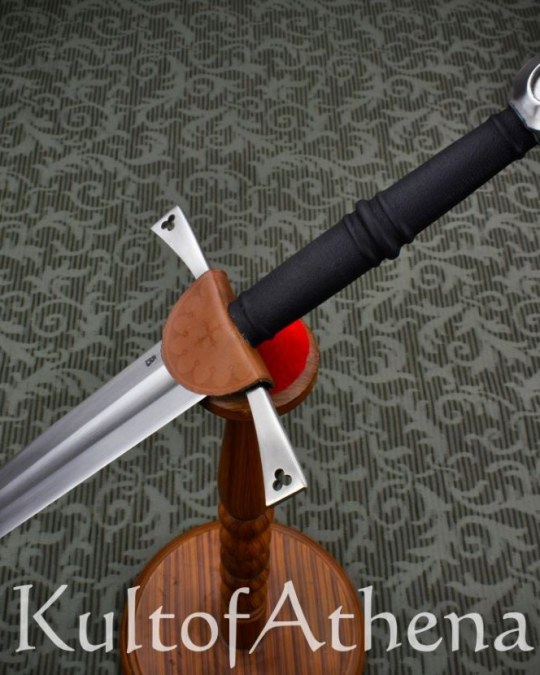

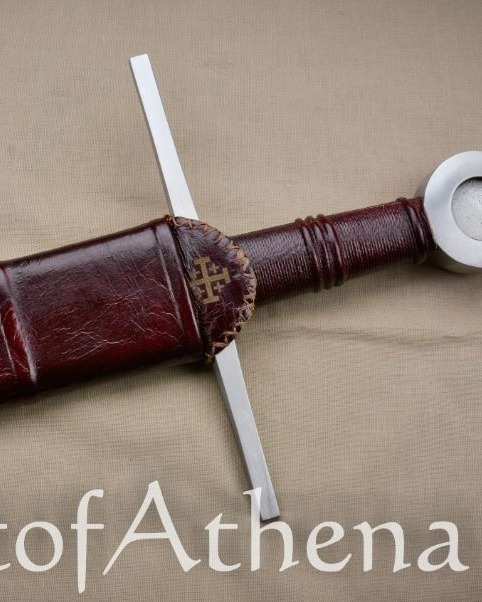

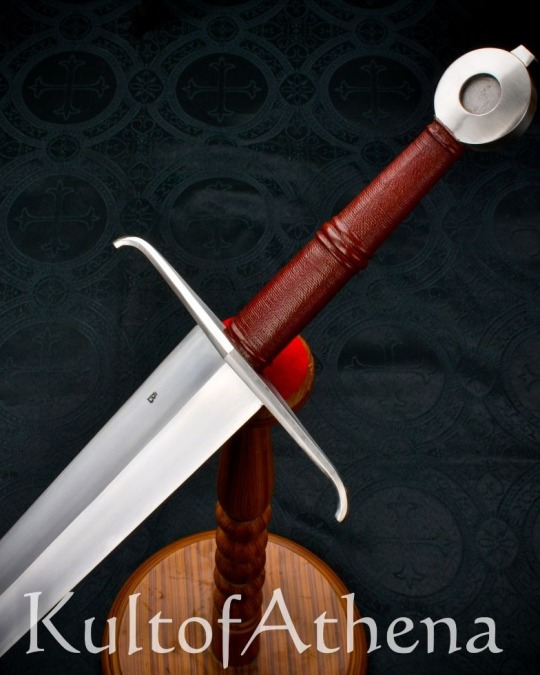
After a rapid sellout of Balaur Arms, produced by LK Chen, we're proud to announce that we are expanding production - including long awaited models (anyone say.... Kriegsmesser?) and they're now available for preorder! Your order will ship to you in March, before they are available on the site.
Balaur Arms German Kriegsmesser
Balaur Arms 15th Century German Longsword
Balaur Arms Knight Templar Arming Sword
Balaur Arms 15th Century Type XVIIIc Alexandria Sword
#Kult of Athena#KultOfAthena#Balaur Arms#LK Chen#PRE ORDER#PRE-ORDER#Kriegsmesser#Kriegsmessers#Longsword#Longswords#Arming Sword#Arming Swords#Knight Templar#Knights Templar#Alexandria Sword#Alexandria Swords#swords#weapons#blades
10 notes
·
View notes
Photo








I’m Lysandre. Let’s see what potential you’ve hidden within you.
#Pokemon#Team Flare#Lysandre#XY#Z#awesome#badass#creepy#compelling#epic#evil#fabulous#psycho#jerkass#scary#pure evil#self righteous#knight templar#creepy boss man#awful man#evil geniuses#magnificent bastard#smug snake#tragic villain#great villain
27 notes
·
View notes
Text
The special diet that kept the Knights Templar fighting fit
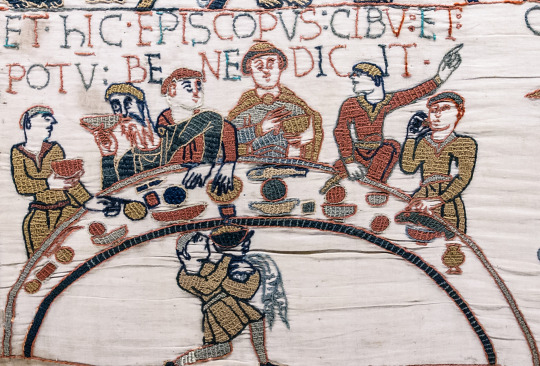
GRAYBEARDS WERE THIN ON THE ground in the 13th century. For even wealthy landholding males, average life expectancy was about 31 years, rising to 48 years for those who made it to their twenties. The Knights Templar, then, must have seemed to have some magical potion: Many members of this Catholic military order lived long past 60. And even then, they often died at the hands of their enemies, rather than from illness.
In 1314, Jacques de Molay, the order’s final Grand Master, was burned alive at the age of 70. Geoffrei de Charney, who was executed in the same year, is usually said to have been around 63. This longevity seems to have been almost commonplace. Fellow Grand Masters Thibaud Gaudin, Hugues de Payens, and Armand de Périgord, to name just a few, all lived into their sixties. For the times, this would have been positively geriatric.
“The exceptional longevity of Templar Knights was generally attributed to a special divine gift,” writes the Catholic scholar Francesco Franceschi in a journal article about their salubrious practices. But modern research suggests an alternative: The order’s compulsory dietary rules may have contributed to their long lives and good health.
Contrary to many modern portrayals, the Knights seem to have lived genuinely humble lives, in service to God. Their dietary choices and obligations reflect this. Though the order grew rich from carefully handled donations and by safeguarding traveling pilgrims’ money, the men themselves took formal vows of poverty, chastity, and obedience. They were not permitted even to speak to women. For nearly 200 years, the order thrived across Europe, peaking at around 15,000 members by the end of the 13th century. Most of all, they were expert warriors, and their ranks comprised some of the best fighters, warriors, and jousters in the world.
Early in the 12th century, the French abbot Bérnard de Clairvaux helped assemble a long and complex list of rules, which structured the knights’ lives. This rulebook became known as the Primitive Rule of the Templars, and drew from the teachings of the saints Augustine and Benedict. But many of the rules originated in the order. Though the document was completed in 1129, writes Judith Upton-Ward, the Templar Knights had already been in existence for several years, “and had built up its own traditions and customs … To a considerable extent, then, the Primitive Rule is based upon existing practices.”
The rules were many and various. The knights were to protect orphans, widows, and churches; eschew the company of “obviously excommunicated” men; and not stand up in church when praying or singing. Even sumptuary laws prioritized humbleness: Their monk’s habits were one colour alone, though on warm days between Easter and Halloween, the rules decreed, they were allowed to wear a linen shirt. (Pointed shoes were always forbidden). But the rules also extended into their dietary practices: How they ate, what they ate, and who they ate with.
Their meals do not seem to have been raucous affairs. Knights were obliged to eat together, but to do so silently. If they needed the salt, they had to ask for it to be passed “quietly and privately … with all humility and submission.” A sort of buddy system existed, partly due to a mystifying “shortage of bowls.” This may have been more a show of abstinence than anything else, like the knights’ emblem, which was of two men sharing a horse.

The knights’ diets seem to have been a balancing act between the ordinary fasting demands on monks, and the fact that these knights lived active, military lives. You couldn’t crusade, or joust, on an empty stomach. (Although the Knights Templar only jousted in combat or training—not for sport.) So three times a week, the knights were permitted to eat meat—even though it was “understood that the custom of eating flesh corrupts the body.” On Sundays, everyone ate meat, with higher-up members permitted both lunch and dinner with some kind of roast animal. Accounts from the time show that this was often beef, ham, or bacon, with salt for seasoning or to cure the meat.
It’s likely that these portions were considerable: If the knights weren’t allowed meat due to a Tuesday fast, the next day it would be available “in plenty.” One source suggests that cooks loaded enough meat onto their plates “to feed two poor men with the leftovers.”
But on Mondays, Wednesdays, and Saturdays, the knights ate more spartan, vegetable-filled meals. Although the rules describe these meals as “two or three meals of vegetables or other dishes eaten with bread,” they also often included milk, eggs, and cheese. Otherwise, they might eat potage, made with oats or pulses, gruels, or fiber-rich vegetable stews. (The wealthier brothers might mix in expensive spices, such as cumin.) In their gardens, they grew fruits and vegetables, especially Mediterranean produce such as figs, almonds, pomegranates, olives, and corn (grain).* These healthy foodstuffs likely also made their way into their meals.

All the while, brothers drank wine—but this too was restricted. Everyone had an identical ration, which was diluted, and they were advised that alcohol should “not be taken to excess, but in moderation. For Solomon said … wine corrupts the wise.” In the Holy Lands, they allegedly mixed a potent cocktail of antiseptic aloe vera, hemp, and palm wine, known as the Elixir of Jerusalem, which may have helped accelerate healing from injuries.
Franceschi describes other regulations beyond the Primitive Rules that were “specifically designed to avoid the spreading of infections.” These included mandatory handwashing before eating or praying, and exempting brothers in charge of manual tasks outdoors from food preparation or serving. Some of these innovations, picked up without any awareness of germs, may have resulted from interactions with Arab doctors, renowned during the period for their superior medical knowledge. By medieval medical standards, Templar Knights were at its apex, able to treat many illnesses and to take care of their weak.
The order was one of the richest in the world—yet these rules prevented the knights from sitting on their laurels or gorging themselves on fatty, cured meat. In fact, many of these rules resemble modern dietary advice: Lots of vegetables, meat on occasion, and wine in moderation. A meal fit not for a king on a throne, but a knight with some serious crusading to do.
Source: https://www.atlasobscura.com/articles/what-the-templar-knights-ate
3 notes
·
View notes
Text
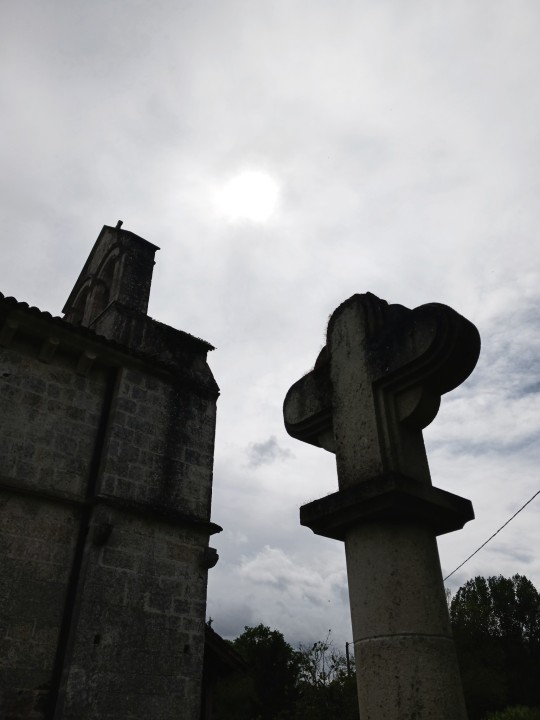
Chapel of the Knights Templar, France
#personal#tradwife#traditional gender roles#traditional femininity#tradfem#traditional#modesty#catholic#catholicism#knight templar#templar#order of the templar#knight#knights
17 notes
·
View notes
Text
Dialogue Prompt
“You’re a liar.”
“Excuse me?”
“There’s a difference.”
“What the hell do you mean? Between what?”
“There’s a difference between gaining enemies by doing the right thing and making enemies to convince yourself that you’re doing the right thing.”
11 notes
·
View notes
Text
youtube
The Seventh Seal: The Last Chess
#the seventh seal#ingmar bergman#50s film#50s movies#50s cinema#philosophy#chessboard#chesspieces#chessposting#chess#templar knights#knight templar#crusades#max von sydow#chess aesthetic#chess art#chess tournament#chess tactics#chess theory#chess pieces#chess player#chess story#chess game#chess champion#chess board#black and white movies#classic movies#knights#knight#warrior of light
0 notes
Text
The Knights Hospitaller at Hampton Court Palace
It’s hard to believe today but if you went back to the 13th century – you would have found something very different at Hampton Court Palace. No magnificent complex of Tudor and Stuart buildings but a medieval manor run by the Knights Hospitaller – under the direction of the Priory at Clerkenwell, which was the de facto headquarters of the Hospitallers in England.
Hampton Court had been a manor…

View On WordPress
#Hampton Court Palace#history#Knight Templar#Knightfall#knights#Knights Hospitaller#Medieval#middle ages#Templar#templars
0 notes
Video
Sacred Echoes: Gregorian Chants for Spiritual Awakening #knightstemplar,
1 note
·
View note